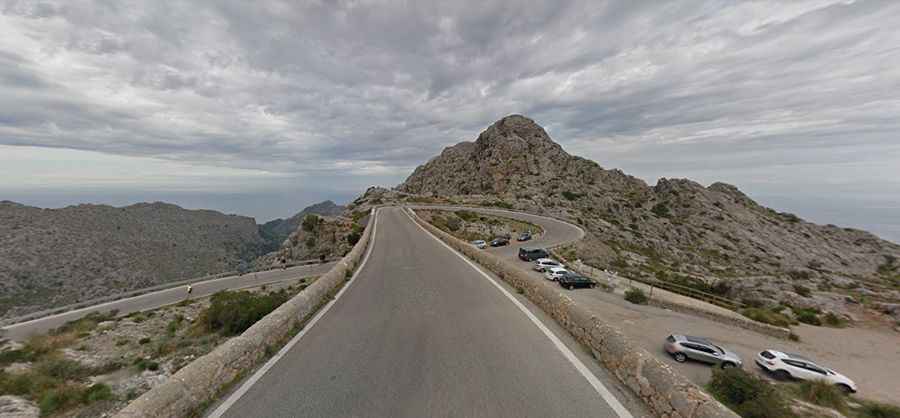Sa Calobra is the Snake Road of Mallorca
Located on the island of Mallorca, in Spain, Sa Calobra Road is one of the most scenic drives in the world. Imagine dropping a long piece of wet spaghetti on the floor. The pattern it makes looks something like what the road looks. If you really want a challenge, try tackling it by bike.

Where is Sa Calobra Road?
Tucked away in the northwestern part of the Spanish Balearic island of Mallorca, the road is located to the east of Port de Sóller, in a quite isolated place on the coast.
Is Sa Calobra Road paved?
The road (officially designated MA-2141) is entirely paved. Snaking through the rocky landscape of the island, the eight-mile stretch of tarmac is also steep. Built in such a way as to avoid using tunnels, a fair proportion of the road has a gradient of more than 7%.
How long is the road to Sa Calobra?
The road is 12.2 km (7.58 miles) long. It runs from the scenic MA-10 road, near an aqueduct, to a payment parking, near the beach of Sa Calobra. It’s one of the best roads in Mallorca.
When was Sa Calobra Road built?
Ruta de Sa Calobra (the Colubrid Route), designed by the Spanish engineer Antonio Parietti, was built in 1932 manually, without the help of any machine, and was designed in a way to avoid the construction of any tunnel, undertaken during the Second Republic. 31,000 m³ of rock were removed, which was then used to level the road. To reduce the amount of excavation at this point, the architect drew inspiration from a necktie to come up with the idea to make this crazy loop in the road. Parietti was also the designer of another stunning road in Mallorca: the road to Cap de Formentor lighthouse.
How difficult is Sa Calobra?
The road tops out at 682 m (2,237 ft) above sea level by Coll dels Reis, a mountain pass. The asphalt becomes very dangerous on rainy days. The most iconic part of the drive is Nus de Sa Calobra (Knot of the tie), a curve of 360 degrees. This tie is one of the most famous curves in the world, turning 270 degrees and going under itself. It’s said to be one of the most dangerous roads in Spain: lots of turns, some sections lack a central road line or guardrails, lots of traffic in summer, and its narrowness. The road, through several narrow canyons and many bridges features more than 50 curves, most of them hairpins and 2.5 km with an average slope of more than 7%. If you are nervous about steep, winding descents, it is best not to contemplate it from the top. Antonio Parietti used the mountain's natural curves for his road, and the gradient is surprisingly steady. It’s one of only five roads with pigtails (nudo de corbata) in Spain.
How long does it take to drive Sa Calobra Road?
To drive the road without stopping will take most people between 25 and 35 minutes. It’s extremely busy in summers and holiday seasons. It is a challenge for cyclists, motorcyclists, and car drivers alike, yet with the gentle speed of 20 km per hour, it makes it possible to enjoy the trip, above all for passengers. Passing impressive rocky landscapes and through two cone-shaped rocks, the Sa Calobra serpentine provides an unforgettable and sensational experience. This road is for sure the most spectacular on the island nowadays and famous for its snake-like shape. It winds naturally around the mountain edges, a masterpiece of twists and turns. It’s one of the best coastal drives in the world.
Where was Cloud Atlas filmed?
The road appeared in Cloud Atlas, a 2012 German drama and science fiction film written, produced, and directed by The Wachowskis and Tom Tykwer, starring Tom Hanks, Halle Berry, Susan Sarandon, and Hugh Grant.